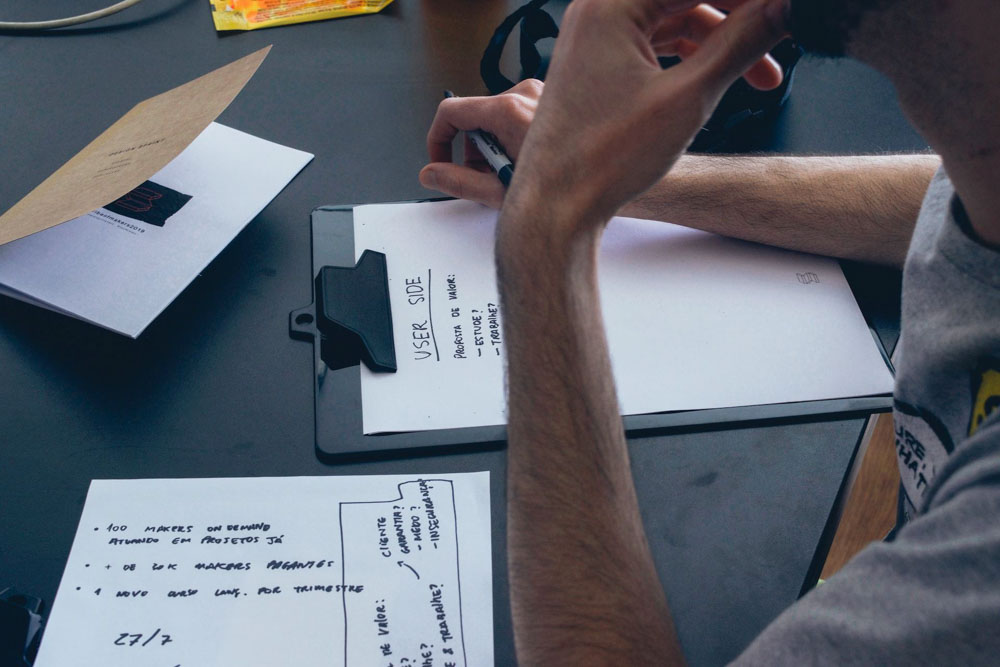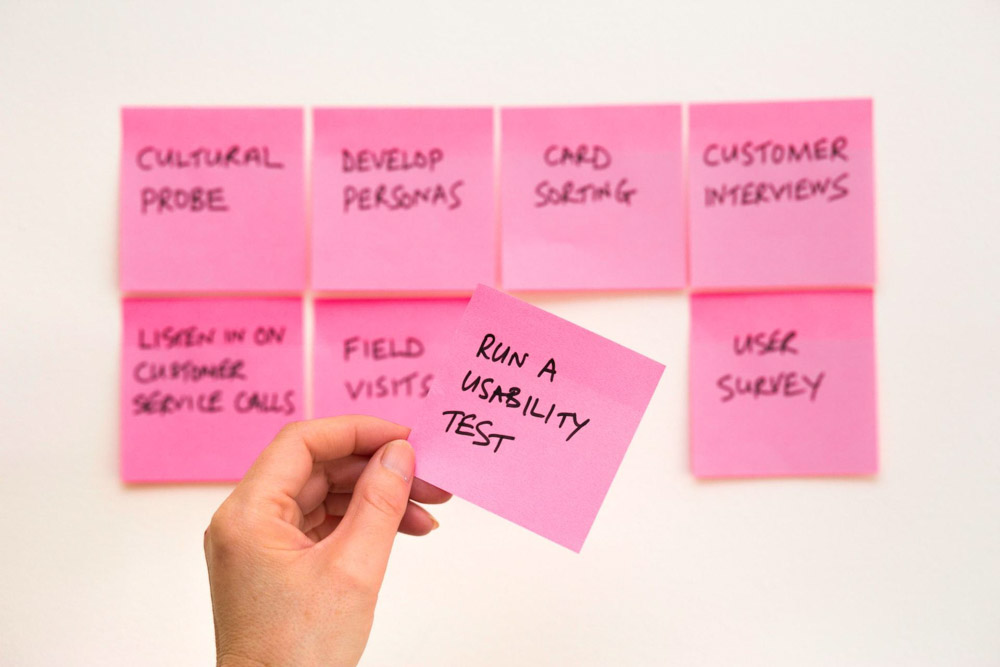Expertly Conduct User Testing: Top Questions to Ask for Maximum Insights

Today, user experience (UX) is crucial for brands that want to appeal to modern consumers, improve retention rates, hit sales goals, and overall experience growth and success. Every part of the user journey, from the moment they seek out and find your brand to the product being delivered into their hands, is part of their experience and will influence how they feel about your brand and your products. And the best way to ensure your customers are having a good experience and are enjoying your products and services is to conduct user testing.
While user testing is primarily concerned with improving products to ensure they meet the customers’ needs, testing can also give you an overall idea of how your brand is performing. With UX testing, you can improve your products, your services, and the overall customer journey to ensure you are delivering the best experience possible.
In this article, we’ll cover what user testing is, why it’s important, methods and objectives for user testing, and the best UX testing questions to ask to ensure a successful product strategy and user experience.
What is User Testing?
In terms of defining user testing, there is not much to it — the term itself is pretty self-explanatory. User testing is essentially a phase of any new product or service launch that involves testing and research to see how your users (customers) feel about your product. In other words, it is the act of gathering data to use for analysis so you can make improvements where needed.
If your goal is to make sure customers buy your products and continue to buy them, you need to make sure the products meet your customers’ needs. And to determine what your customers need, you have to conduct testing and research.
As mentioned above, testing can also be used not just to improve your products but it can also be used to get an idea of what consumers think of your brand and their experience as a whole when they interact with your company and your products. Obtaining and analyzing this information can then help your company create better products and better experiences to improve customer satisfaction.
When it comes to actually conducting the testing, there are essentially four different categories of testing or research methods that you can use to gather data:
- Generative – research/testing to help you find a solution to a specific problem (i.e., interviews or field studies)
- Evaluative – testing to help you evaluate a particular product, feature, or concept (i.e., usability testing, closed-card sorting, surveys)
- Quantitative – research to identify patterns and collect numerical, quantitative data (i.e., surveys, data analytics, usability testing)
- Qualitative – testing and research to help you understand customers better and what they want or need (i.e., interviews, observations, product walkthroughs)
Today, data analytics is one of the most common methods of conducting research to gather essential quantitative data that can help brands improve their products and their entire company even as a whole. It is a very useful and beneficial method that should almost always accompany other methods such as questions for interviews or surveys.

Why is User Testing Important?
Your customers are individuals with unique wants and needs, and those needs are constantly changing and can be influenced by any number of things. Thus, regular user testing is necessary to help brands better understand who their customers are and what their current needs are so they can tailor their products and services to more directly meet those needs.
If you create a product “blindly,” in other words, if you create a product without user testing, your product or your overall product and brand strategy could very easily miss the mark, resulting in poor customer satisfaction and low sales. So the more testing you do, the better.
However, keep in mind that your testing itself should have a clear goal or focus. Data analysis can easily become overwhelming and even confusing if you conduct your research aimlessly with no real purpose. When you are regularly gathering large amounts of data for testing, you don’t want to lose sight of your goals and what information you are specifically looking for, as this could result in something known as data paralysis.
This is why it’s important to have set goals or primary objectives, as it helps you refine and focus your testing and keeps you from getting lost or “paralyzed” by significant amounts of data.
What Are the Primary Objectives of User Testing?
The objectives of user testing can vary greatly. There are no set objectives as the goal of each brand and what they hope to discover is unique to their situation, their products, and their customers. But the overall idea with objectives is to guide and direct your research and testing.
The goal is to find answers to questions or solutions to problems that can help you create better products, such as discovering how your users feel about a specific product or a specific feature, what users think is working, and what users think needs to be better, or in general what current trends or behaviors are common amongst your targeted consumer base.
User surveys and interviews, for example, are one way to conduct your research, but you need to come up with the right questions to ask to make sure your testing is focused and will lead you to the answers or solutions you are looking for.

What Are the Best Questions to Ask During the User Testing Phase?
So when using research methods such as interviews, polls, and surveys, what questions should you be asking?
The answer can depend on what data you are specifically looking for or what answers or solutions you specifically need. But there are a general set of questions that are always good to ask, no matter the situation, to help you better understand your customers, what they need, and how they feel about your brand or product.
Pre-Screening Questions
When conducting user testing, you want to make sure your test participants fall into the right category or meet certain qualifications that match who your target consumer audience is. Pre-screening questions can help you narrow down your options and find the right participants.
The best pre-screening questions to ask include:
- How old are you?
- What is your highest level of education?
- What is your income level?
- What are your hobbies and interests?
- What does your typical day look like?
- How much time do you spend online?
- What apps and websites do you use regularly?
- How often do you shop online?
- What is your most used digital device?
- Have you used a product like this before?
All of these questions can help you determine if the participant is someone who would use your product or be interested in it in the first place, which is important when conducting testing. For example, if you are developing a new high-tech gadget that is in the $$$–$$$$ price range, you likely wouldn’t want a participant who doesn’t use tech much and who doesn’t make that much money.
Questions During Testing
In-test questions are going to be a set of questions directly related to your objective, such as specific or general questions about your product.
In this case, some of the kinds of questions you would want to ask include:
- Do you know any other competitor products like this one?
- What features do you find most useful or valuable in this kind of product?
- What are some examples of how you would use this product?
- What do you think about the design (i.e., color, shape, size, function, etc.)?
- What about the product is preventing you from using it or achieving your desired result?
- I noticed you did X when using the product. Why?
These questions are meant to give you a better idea of how users use your product, how they feel about it, how well it is working for them, and what things about it might need to be changed or improved.
Post-Testing Questions
After testing, you should ask follow-up questions to clarify anything that needs clarifying and to get an overall idea of how good or poor the user experience was.
The best questions to ask as a follow-up include:
- How difficult were the test and the instructions that were given?
- How would you rate your overall experience with the product?
- If you could change one thing about the product, what would it be and why?
- What did you like most about the product?
- What would you like to see from our products in the future?

Wrapping Up
These are just some examples of the best or most commonly asked questions in user testing, but they are by no means set in stone. Again, when conducting research and testing, the first step is to define your goals and objectives, and the questions you come up with can change and vary depending on what those objectives are.
Furthermore, keep in mind that user testing isn’t just about what the participants say, but is also about their body language. It’s not uncommon for users to respond how they think you want them to, but their facial expressions and body language can give you a better idea of how they actually feel.
Additionally, if a user seems uncomfortable, they are also less likely to be fully open and honest with you. So make sure the testing is done in an environment that is friendly and welcoming and encourages users to be themselves and respond truthfully.
Speak to high quality people
